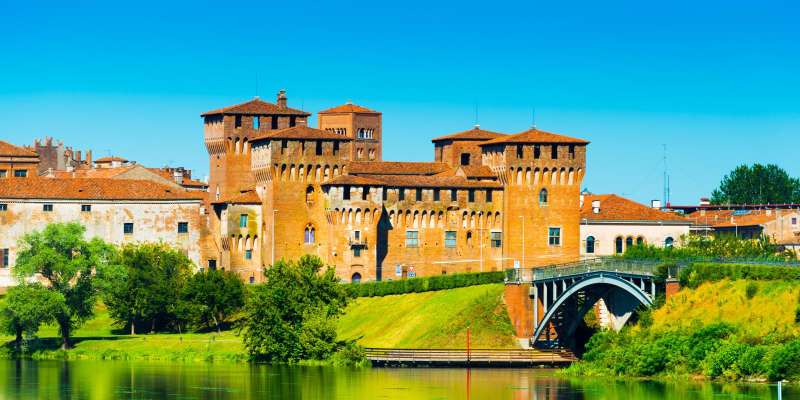- Home
- Useful Tips
- Mantua's best kept secrets from...
Most visitors to Mantua never discover its true magic. While guidebooks point to the Ducal Palace and Te Palace, over 80% of travelers miss the authentic experiences that make this Renaissance city unforgettable. The frustration of following crowded tourist trails is real – you waste precious vacation time on overhyped attractions while local treasures remain hidden. Even worse, returning home with the sinking feeling you didn't truly experience Mantua's soul. This isn't just about missing photo opportunities; it's about losing the chance to connect with a city that UNESCO calls 'a masterpiece of creative urban planning'. From secret courtyards where musicians still perform 16th-century madrigals to family-run trattorias serving pumpkin tortelli recipes unchanged since the 1500s, the real Mantua awaits those who know where to look.


How to escape the tourist crowds in Mantua's historic center
The maze-like streets surrounding Piazza Sordello hold Mantua's best-kept secrets, if you know how to navigate them. While crowds cluster around the cathedral, duck into the quiet courtyard of Casa del Mercato at Via Calvi 28, where locals gather for aperitivo under 15th-century loggias. Time your visit for late afternoon when golden light bathes the terracotta buildings – this is when Mantua's timeless atmosphere feels most palpable. For an even more authentic experience, follow the 'strettoie', the narrow medieval passageways that connect main streets. These hidden alleys, some barely shoulder-width, reveal unexpected artisan workshops and tiny chapels. Particularly magical is Vicolo Bonacolsi, where ivy-draped walls lead to a forgotten oratory with fresco fragments visible through iron grates. The key is wandering without rigid schedules – Mantua rewards those who embrace slow exploration over checklist tourism.
Where locals eat: authentic Mantuan dining beyond the guidebooks
Mantua's culinary scene thrives in unassuming osterias that most visitors walk right past. Forget tourist menus featuring 'all of Lombardy's specialties' – true Mantuan cuisine focuses on just a few perfected dishes. The secret is seeking places where the menu changes daily based on what comes from the family farm. Osteria dell'Oca on Via Trieste exemplifies this, serving legendary pumpkin-filled tortelli on handmade pasta so thin it's nearly translucent. For the ultimate local experience, visit Trattoria da Pancaldi near Pescherie di Giulio Romano. This century-old spot serves cotechino with mostarda in the very room where Verdi allegedly composed Rigoletto. Reservations are essential for their Saturday-only 'Busa in the Fog' – a slow-cooked pork shoulder that embodies Mantua's peasant food heritage. Budget-conscious travelers should note that these authentic meals often cost less than tourist traps, with most primi under €12 and carafes of local Lambrusco at €5.
Secret architectural wonders even many Mantuans don't know
Beyond the famous palaces, Mantua conceals architectural jewels in plain sight. The Camera degli Sposi gets all the attention, but just two blocks away, Palazzo San Sebastiano houses the city's most intriguing fresco cycle – the rapidly deteriorating but breathtaking 'Triumph of Caesar' by Andrea Mantegna. More obscure still is the Synagogue in Via Govi, one of Italy's few remaining pre-expulsion Jewish temples, its interior a stunning mix of Baroque and Neoclassical elements. For something truly unexpected, seek out Casa del Mantegna's hidden courtyard, where the artist designed a perfectly proportioned circular space that creates extraordinary acoustic effects. Architecture enthusiasts should mark their calendars for the rare openings of Santa Maria della Vittoria, a deconsecrated church containing Mantegna's final frescoes, visible only on certain heritage days. These sites prove Mantua's Renaissance brilliance extends far beyond its headline attractions.
Timing tricks for experiencing Mantua's magical moments
Mantua transforms at specific times that most visitors miss. Dawn at Piazza delle Erbe reveals the market square as it's existed for 700 years, with bakers delivering warm sbrisolona cakes before the stalls assemble. Come evening, the real magic happens along the quiet stretches of the Mincio River – particularly at Ponte dei Mulini, where sunset turns the water golden beneath ancient water mills. Seasonal timing matters too: September brings the Festivaletteratura with pop-up readings in secret gardens, while winter offers fog-shrouded palace views straight out of a Renaissance painting. For theater lovers, the Bibiena Theater's backstage tours (first Sunday monthly) unveil where 14-year-old Mozart performed. These moments require no extra spending, just local knowledge of when and where to be. That said, small-group twilight walking tours can help decode these temporal patterns while sharing fascinating backstories you'd never discover alone.



